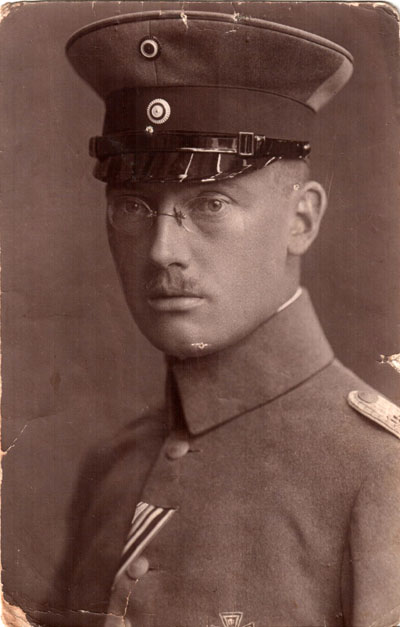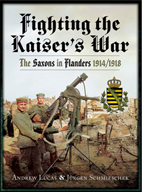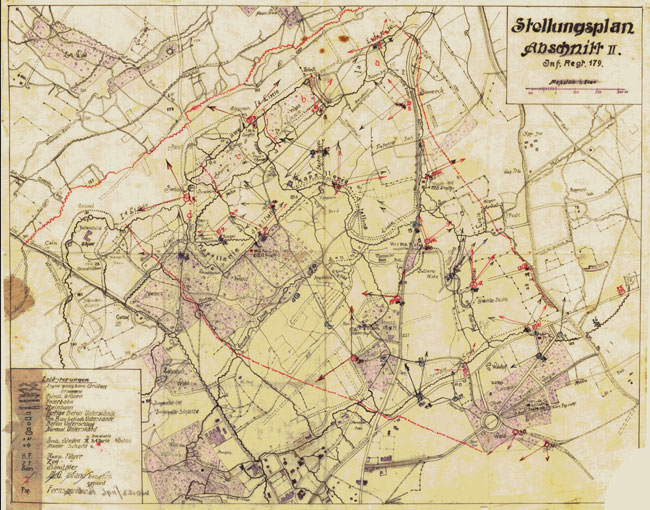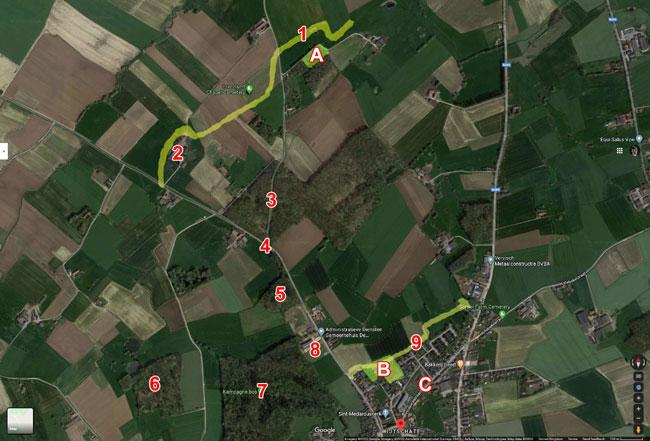Prof. Dr. phil. Alexander Pache, also known as Alfred was born on 31st December 1878 in Steinigtwolmsdorf near Bautzen. We do not know which was his first and which his second name, but are certain that both names refer to the same man. He pursued an academic career and by 1914 had achieved the status of Gymnasialoberlehrer (senior secondary school teacher) and published at least two of what would eventually be many scholarly volumes on German literature and history.

Like many such professionals in imperial Germany he was also a reserve officer, (Leutnant der Reserve) and at mobilisation became a platoon commander in Kgl. Sächs. 16. Infanterie-Regiment Nr.182, Germany's youngest peacetime infantry regiment. Formed in October 1912 and garrisoned at Freiberg, it fought in 1914 with 23. Infanterie-Division / XII. Armeekorps on the Marne and subsequently held the line north of Reims.
When 23.ID was reduced to one infantry brigade of three regiments in March 1915, IR 182 joined the likewise 'surplus' IR 178 (from 32.ID) and RIR 106 (from 24.RD) as part of the new 123. Infanterie-Division. Initially deployed with XII.AK on the Aisne, 123.ID soon moved to the Lille area in OHL reserve. After briefly holding sectors near Lens and in the Wytschaetebogen (Wytschaete Salient) in June and July it was committed in August to the murderous Souchez sector facing Notre Dame de Lorette and bore the brunt of the French offensive there on 25 September. Within four days IR 182 alone lost 39 officers and 1,250 NCOs and men killed, wounded or missing. Although himself wounded, Pache remained in action and became a company commander on 29 September as replacement for the slain Oltn. von Mücke of 8./182. From 30 September to 14 October his regiment was in Bereitschaft (immediate reserve) at Wingles, where it received large replacement drafts and began rebuilding. It then returned to Wytschaete, initially (like IR 178 and RIR 106) holding exactly the same sector as in July.
The small wood north of Wytschaete known to Pache as Bayernwald had many names. To the Flemish it was Kroonaard- or Croonaertbos, and accordingly Croonaert Wood to the British. They also knew it as Wood 40, referring like the French Bois Quarante to the height above sea level from which it dominated the terrain to the north and west. The French only ceded this vital ground to 6. Kgl. Bayer. Reserve-Division on 16 November 1914 after many days of hard fighting. In honour of the Bavarians the former Beilwald (Axe Wood) became Bayernwald on German maps. In 1915 it extended much further than today, not only towards St. Eloi but also into part of the field opposite the current entrance. Here lay the front line, plagued from the outset by sloping ground, high groundwater and flanking artillery fire directed from the Kemmelberg (Mont Kemmel). It was supported on either flank by German positions at Hollandsche Schuur Farm and St. Eloi, both already targeted by British tunnellers and destined for destruction on 7 June 1917. In the winter of 1915-1916 however the greatest concern for the Saxons was the rising water level which collapsed trenches and rendered parts of Bayernwald uninhabitable. As a result the Prussians who followed them began work in summer 1916 on a new, deeper trench system behind and uphill of the old line - which it then replaced as the main position from February 1917. The current reconstructed Bayernwald trenches represent only a small part of this newer trench line.

Above: Wytschaete as it appears in Google Maps.
1916 locations:
- Approximate front line in winter 1915-1916.
- Hollandsche Schuur Farm (destroyed by mines at the Battle of Messines on 7th June 1917).
- Hessenwald (Grand Bois).
- Rote Villa (Red Chateau), a ruin which housed a Bataillonsgefechtsstand (battalion battle HQ).
- Zahnstocherwald (Unnamed Wood).
- Markwald (Petit Bois).
- Wytschaeterwald (Bois de Wijtschate).
- The Hospice, described by Pache in the regimental history as “a bulky, red brick building in gothic style, which had still been quite well preserved in July [1915] but was now [in October] badly shot-up and would turn into a pile of rubble over the course of the winter".
- The Sachsengraben, part of the third defensive line on the edge of Wytschaete.
Current locations:
- The excavated and restored Bayernwald trenches.
- Hill 80 dig site.
- The recently rediscovered Kortestollen.
- Prev
- Next >>








